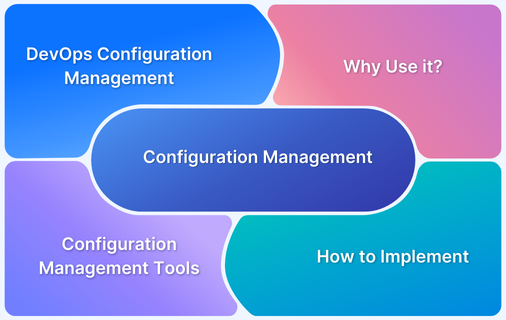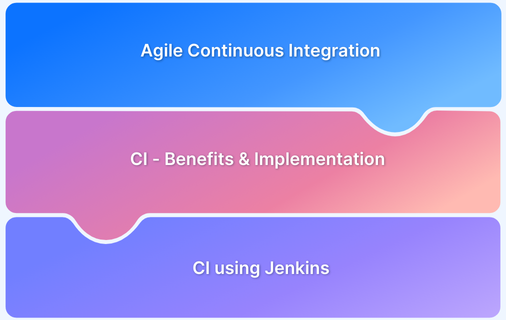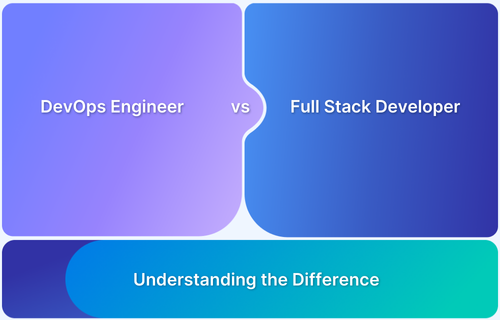DevOps has revolutionized software development, accelerating releases and improving innovation. Yet, speed often comes at the cost of quality, risking user dissatisfaction. QA plays a crucial role in maintaining this balance through Continuous Testing.
Overview
The Role of QA in DevOps
QA in DevOps pipeline ensures quality at every stage through Continuous Testing, automation, and early involvement. It enables faster defect detection and seamless deployments.
The QA as a Consultant
QA advises teams on best testing practices, tool selection, and test coverage, bridging the gap between development, operations, and quality assurance.
The QA as a Strategist
QA strategists design testing frameworks, automation strategies, and integrates testing into CI/CD, ensuring overall quality.
This article delves into the significance of QA in DevOps and how DevOps QA testers ensure seamless, high-quality releases.
DevOps Terminologies
Let’s begin with defining some of the relevant terms:
- DevOps: DevOps applies Agile practices to QA and Ops teams, thus streamlining the build, validation, deployment, and development of software. For this purpose, DevOps prioritizes integration, collaboration, and automation between Dev and Ops teams. It seeks to standardize development environments and improve predictability, efficiency, and security in the software development lifecycle.
- CI/CD: CI/CD refers to practices for software engineering and deployment.
- CI or Continuous Integration is an engineering practice in which team members integrate their code at a very high frequency. Teams implementing CI aim to integrate code daily or, in some cases, even hourly.
- CD or Continuous Delivery is the practice of ensuring that code is always in a deployable state. This means that all code changes – new features, bug fixes, experiments, configuration changes – are always ready for deployment to a production environment.
- CD can also mean Continuous Deployment – a practice in which all changes are automatically deployed into production. Unlike Continuous Delivery, there is no final manual approval step before releasing into production.
- Continuous Testing: Continuous Testing refers to a set of automated tests that are executed every time a new code build is pushed to the repository. Basically, every time new code is pushed, a series of tests are run to verify code for errors or issues before being moved to the production environment.
Continuous Testing facilitates repeated, thorough verification of software at individual developer levels in early stages, as well as testing of the integrated code. The intention is to minimize the appearance of larger, more complex bugs in later phases.
The Role of QA in DevOps
DevOps breaks down barriers between developers and QA. It improves collaboration to prevent the traditional issues between teams. In non-DevOps setups, developers code, QA finds bugs, and Ops struggles with deployments—leading to inefficiencies and conflicts.
With DevOps, QA is integral from the start, ensuring testing priorities shape development strategies. Testers join early discussions, developers run unit tests, and QA actively contributes to debugging. This collaborative approach demands a robust testing strategy, keeping code clean and deployment smooth—making QA the backbone of quality in DevOps.
The QA as a Consultant
DevOps is all about shifting individual and collective mindsets in more collaborative directions. Developers take on more testing responsibility so that QAs do not have to spend time identifying basic errors in code.
However, to execute this shift, devs will require some training. With devs taking on more testing, QAs will transition to a more consultative role, helping devs create better tests and become better at screening for quality. QAs would also be responsible for helping devs gain a better understanding of testing philosophies and processes. This fundamental shift in the technical approach cannot be performed without serious engagement and input from QA departments.
At the end of the day, developers have not been trained to look for quality issues, only fix them. Even when they care about doing so, they will probably miss issues. In DevOps, QA responsibilities start with imparting knowledge and training to developers.
The QA as a Strategist
The best form of the SCRUM model incorporates QA expertise directly into development blueprints. By involving QA from the start of a sprint, product creation and growth becomes more effortless and evolved.
As a strategist, the QA engineer makes high-level decisions about what standards the software should meet in its final form. Since QAs must have intimate knowledge of how end-users think and interact with software, they are best placed to advise dev teams on what features to include, what common bugs to look out for in unit tests, and what kind of users the software would be targeted towards.
DevOps QA testing also includes crafting the automated test cases that constitute the Continuous Testing part of the CI/CD pipeline. Different software must be tested for different bugs, and it is the prerogative of the QA to decide what tests would be best positioned to identify said bugs.
In successful DevOps environments, QA comes much earlier into the picture. Development sprints do not begin without the specifications being reviewed by the QA team and accounting for their recommendations on questions of security, performance, and stability.
As strategists, QAs are also responsible for selecting the most suitable tools and frameworks for manual testing and automation testing. Remember, successful DevOps implementation relies heavily on automation. It is of utmost importance to use the right test automation frameworks, established in the right toolchains that will automate large sections of the development and deployment pipeline.
Run manual and automated tests on real browsers and devices. Start running tests on 3500+ real browsers and devices on BrowserStack’s real device cloud. Run parallel tests on a Cloud Selenium Grid to get faster results without compromising on accuracy.
Leverage integrations with the most popular and effective CI/CD tools to execute DevOps-style development. Detect bugs before users do by testing software in real user conditions with BrowserStack. Sign up for free, choose the required devices and browsers, and start testing today.
DevOps, for QA testers, provides opportunities to evolve and align with the changing horizons of technology and user priorities. Qa engineers hold a place of power and responsibility in DevOps, but it must start with a change in how they approach their role in the first place.
Conclusion
Incorporating Quality Assurance (QA) into DevOps is essential for delivering high-quality software efficiently. By improving collaboration between development and operations teams, QA ensures that products meet user expectations and maintain reliability.
To enhance your DevOps pipeline, consider integrating BrowserStack Automate—a robust cloud-based testing platform that enables automated testing across a vast array of real devices and browsers. With features like parallel test execution, seamless CI/CD integration, and comprehensive debugging tools, BrowserStack Automate empowers teams to accelerate release cycles without compromising on quality.





